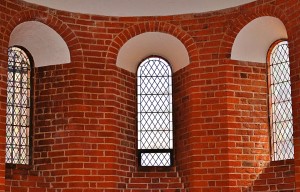How Often Should Your Building Have Masonry Maintenance?

Brick exteriors are stylistically versatile, as they can add either a historic or contemporary aesthetic to buildings. The material is sturdy, energy-efficient, and can positively impact resale value. Although they are extremely long-lasting, brick structures do require some degree of maintenance and care to ensure structural integrity. Use the following tips to help preserve your commercial or residential units.
Cleaning Brick
The starting point of your brick maintenance routine should include a rinse of the exterior of the building. Use a garden hose with a strong spray nozzle to remove any lodged dirt; in places with limited direct sunlight, check for moss or mildew. Shaded, moist areas allow vegetation to thrive and can contribute to excess moisture. For removal, combine one cup of bleach with a gallon of water and scrub with a bristled brush. Try not to use a wire brush as it may leave behind metal residue that could cause rust and discoloration.
Spot Check Brick for Water Damage
For bricks, water damage usually has two root causes: splashback and rising dampness. Splashback occurs when rain continually beats on bricks, finding its way into cracks and grooves and settling in these crevices. Rising damp occurs when the groundwater rises and leaves what is referred to as a tide line. Though the groundwater level will rise and fall over time, the salt contained in the moisture could remain in the brick and cause deterioration. It’s recommended to look for signs of water damage yearly and seek restoration services if needed.
Tuckpointing Brick
Tuckpointing is the process of filling in mortar joints that have become weak, cracked or damaged in some way. The damaged mortar is removed first and then the fresh mortar is applied in excess in a layered process. Layering involves applying fresh mortar, which should be two times the width of the old mortar, to the damaged surface as it will not hold up on its own.
Brick buildings are a huge part of historic Chicago architecture, which is why Soumar Masonry Restoration, Inc. wants to help you preserve them. Our masonry renovation, restoration, and inspection services are conducted by trained professionals at our family-owned business. Request an estimate online and set up an appointment with us today.
